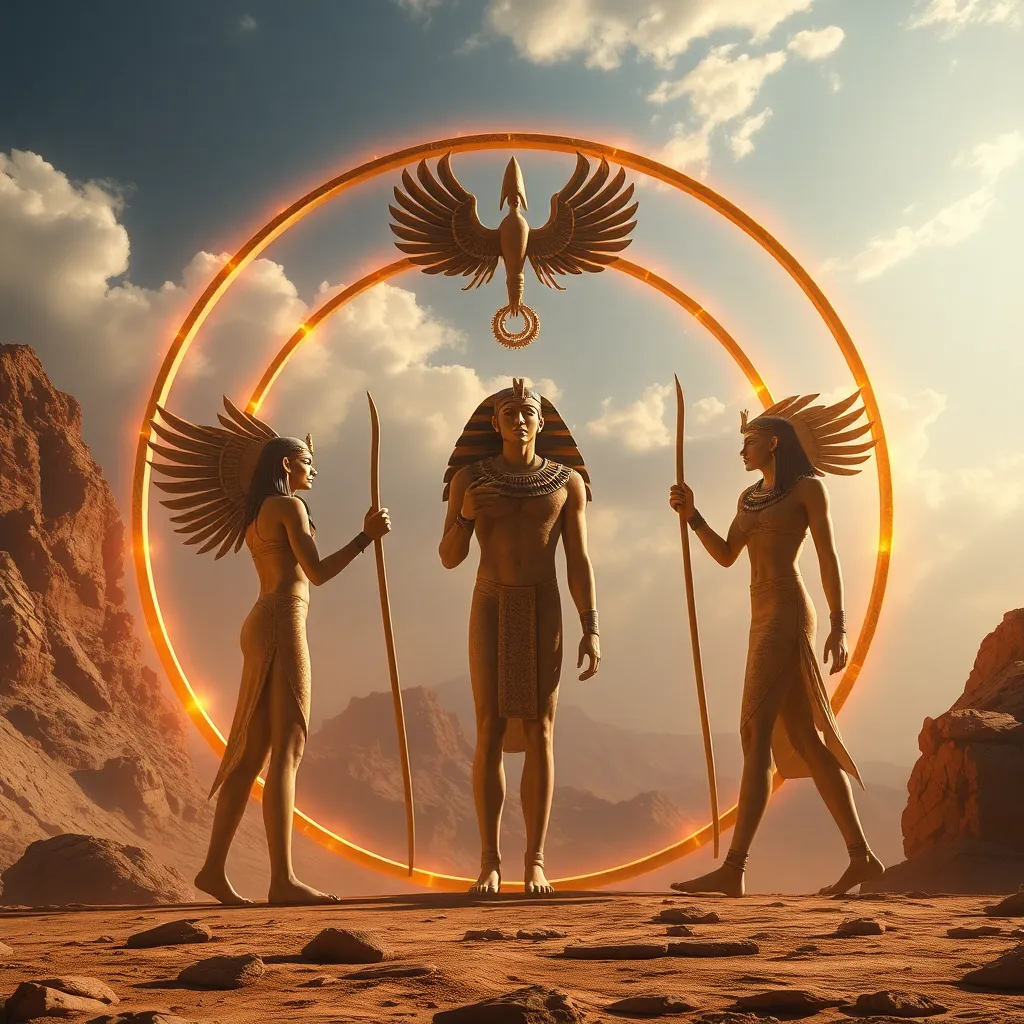The Aten and the Cycle of Life: Birth, Death, and Rebirth
I. Introduction
The Aten is one of the most fascinating deities in Ancient Egyptian mythology, known primarily as the sun disk. The Aten represents not just a god but also a profound symbol of the cycle of life, encompassing birth, death, and rebirth. In Egyptian culture, these cycles were deeply intertwined with their beliefs, rituals, and everyday life.
This article aims to explore the Aten’s significance and its representation of life’s cyclical nature, examining historical contexts, symbolism, and the Aten’s legacy through the ages.
II. Historical Context of the Aten
The Aten emerged prominently during the reign of Pharaoh Akhenaten, who introduced significant religious reforms that shifted the focus from traditional polytheism to a form of monotheism centered around the worship of the Aten. This was a radical departure from the established pantheon of Egyptian gods.
In comparison with traditional Egyptian beliefs, which honored a multitude of gods and goddesses, the Aten represented a singular divine force. This shift not only altered religious practices but also had a profound impact on art and culture during and after Akhenaten’s reign.
- Akhenaten’s reign (circa 1353-1336 BCE)
- Focus on the sun disk as the sole deity
- Artistic expressions reflecting this monotheistic shift
III. Symbolism of the Aten
The Aten is visually represented as a sun disk radiating rays that end in hands, symbolizing life and energy. This imagery emphasizes the Aten’s role in creation and sustenance of life in Ancient Egypt.
Light, as a fundamental aspect of the Aten, held great significance in both creation myths and the daily lives of the Egyptians. The sun’s light was seen as a source of growth, health, and prosperity.
Artistic depictions of the Aten are abundant in the tombs and temples of Akhenaten, showcasing the sun disk in various forms, often accompanied by the pharaoh and his family receiving its benevolent rays.
IV. The Cycle of Birth
The Aten plays a crucial role in Ancient Egyptian creation myths. According to these myths, the sun’s rising each day symbolizes the birth of new life and opportunities. The connection between the Aten and birth is evident in the rituals and traditions surrounding childbirth and fertility.
Birth rituals often invoked the Aten’s blessings, reinforcing the idea that life begins with the sun’s light. The daily rising of the sun serves as a powerful metaphor for birth, emphasizing renewal and the potential for new beginnings.
V. The Concept of Death
In Ancient Egyptian beliefs, the Aten also influenced concepts surrounding death and the afterlife. The sun’s journey across the sky was likened to the soul’s journey after death, where the Aten guided souls through the underworld.
Death rituals were elaborate and deeply significant, involving the preservation of the body and offerings to the Aten, ensuring that the deceased could navigate the afterlife successfully. The Aten was viewed as a protector and guide for souls, illustrating the continuity between life and death.
VI. Rebirth and Renewal
The symbolism of the sun setting and rising encapsulates the themes of rebirth and renewal. As the sun sets, it signifies the end of a day, but this is followed by the promise of a new dawn. This cyclical pattern mirrors the natural rhythms of life and death.
Festivals and celebrations in Ancient Egypt often honored this cycle of rebirth. One notable celebration was the Opet Festival, which celebrated the annual flooding of the Nile, a source of fertility and life, representing renewal in both the agricultural and spiritual realms.
- Opet Festival: Celebrating fertility and renewal
- Seasonal cycles and their connection to the Aten
VII. The Aten’s Legacy in Modern Context
The worship of the Aten has left a lasting impact on contemporary spiritual practices and philosophies. Elements of Aten worship can be seen in modern interpretations of monotheism and the reverence for the sun as a source of life.
In modern culture, the Aten can be reinterpreted as a symbol of enlightenment and unity, resonating with themes prevalent in various spiritual movements. The cycle of life—birth, death, and rebirth—continues to hold relevance in today’s discussions about existence, spirituality, and the environment.
VIII. Conclusion
In conclusion, the Aten’s significance in the cycle of life is profound and multifaceted. As a symbol of birth, death, and rebirth, the Aten embodies the essential truths of existence that resonate through time. The themes of renewal and the cyclical nature of life remain relevant, encouraging ongoing reflection on how ancient beliefs can inform contemporary life.
The enduring legacy of the Aten in both historical and cultural contexts highlights the importance of understanding our own cycles of life and the universal themes that connect us all.




